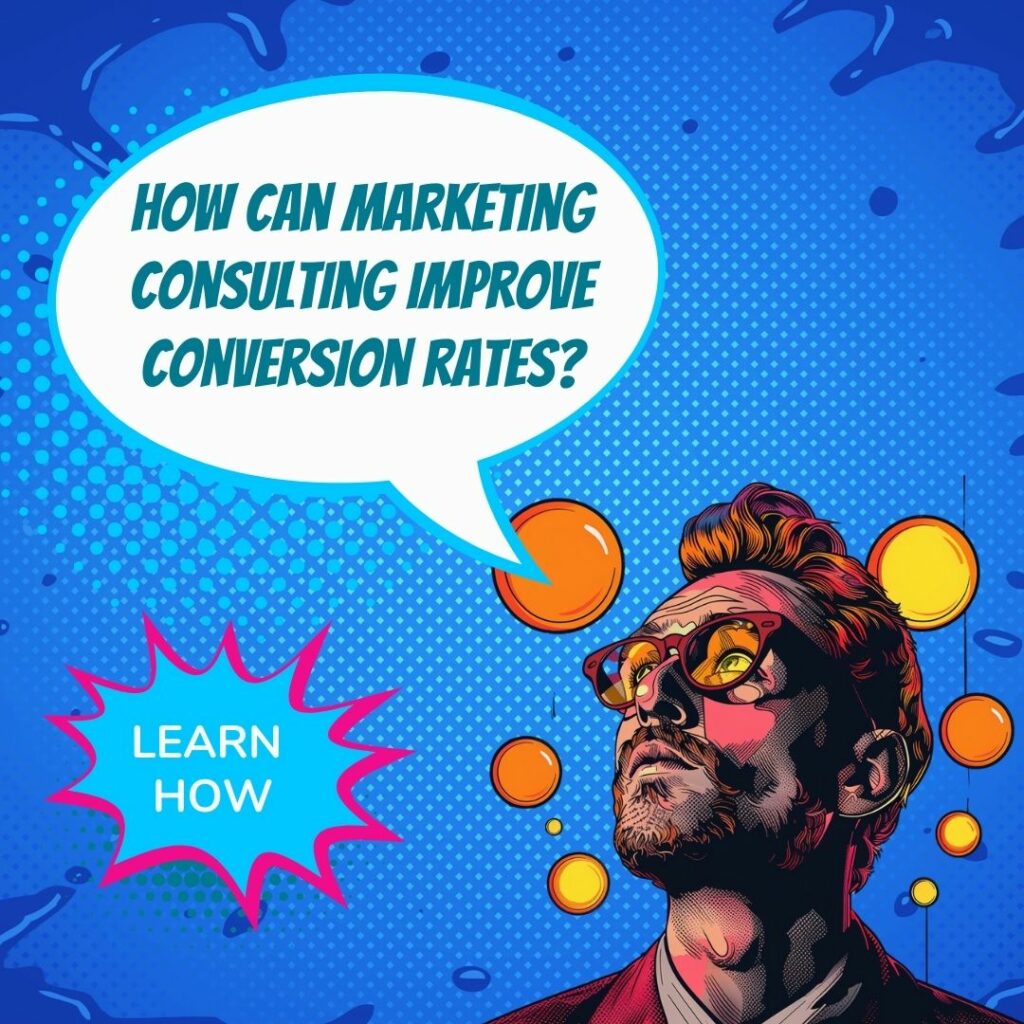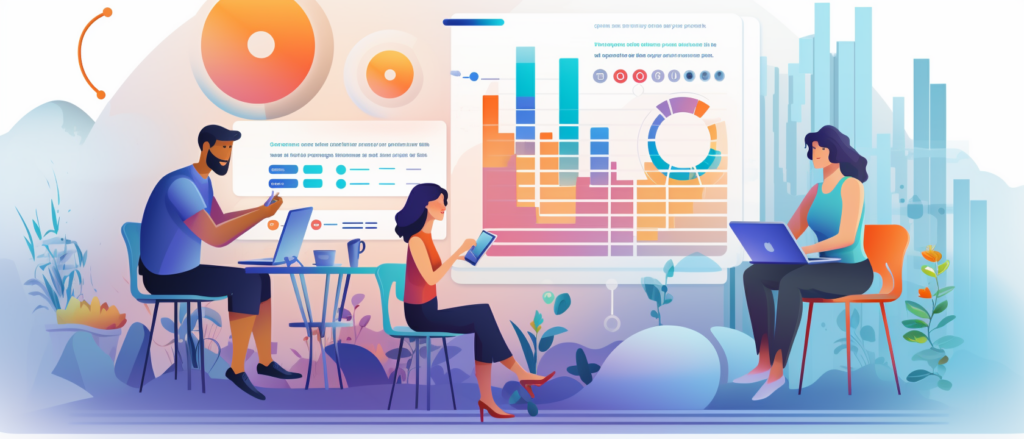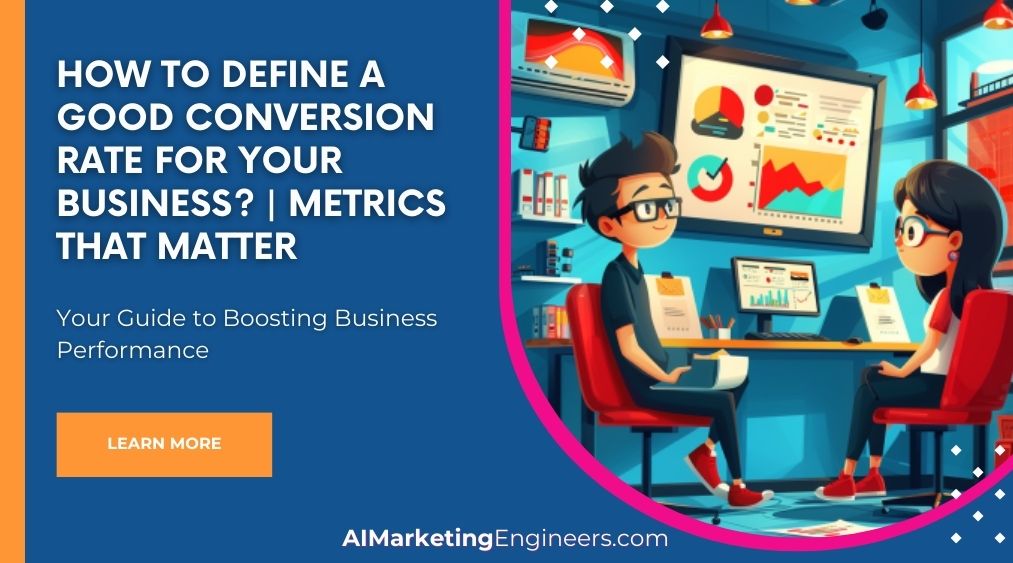Key Takeaways
✅ Understand Your Audience and Validate Ideas: Move beyond general knowledge to specific insights about your target audience through research and experimentation. This helps in crafting a customer experience that converts.
✅ Focus on User-Centric and Data-Driven Approaches: Engage directly with your customers through surveys or interviews and rely on data tools like A/B testing to guide your efforts. Tailor marketing materials to meet the specific needs identified.
✅ Implement Continuous Testing and Optimization: Regularly assess your marketing strategies to identify gaps and continuously improve. Utilize tools like heat mapping and media mix analysis to refine and enhance your tactics.
 Introduction
Introduction
Improving conversion rates is a top priority for any business looking to maximize its marketing efforts. Marketing consulting best practices can provide the insights and strategies needed to transform your approach and achieve significant results. By leveraging expert advice, businesses can identify and address the barriers that prevent potential customers from converting. This involves a thorough analysis of current marketing tactics, audience behavior, and the overall customer journey to pinpoint areas for improvement.
Implementing these best practices can lead to a more engaging and effective marketing strategy. From optimizing website design and content to refining call-to-action techniques and personalizing customer interactions, the right consulting approach can make all the difference. By focusing on data-driven decisions and continuous testing, businesses can enhance their conversion rates, ultimately driving growth and increasing revenue. With the guidance of experienced marketing consultants, companies can turn their conversion challenges into opportunities for success.
Top Statistics
| Top Statistics | Insight |
|---|---|
| The average conversion rate for websites is 2.35% | This highlights the common baseline, helping businesses measure their performance against the industry standard. |
| Top websites have a conversion rate of 11% or more | Top-performing sites demonstrate the benchmarks that are achievable with optimal strategies. |
| Including a video on a landing page can increase conversion rates by up to 80% | Videos can boost engagement and clearly convey product benefits. |
| Personalized calls-to-action (CTAs) convert 202% better | Tailoring CTAs specifically to the user offers a more compelling invitation to act. |
| Customer relationship management (CRM) software can increase conversion rates by 300% | Adopting CRM tools can greatly enhance the efficiency of sales and marketing efforts, leading to massive gains in conversion. |
Understanding Conversion Rates: The Key to Marketing Success
Conversion rates measure the percentage of visitors who complete a desired action on your website, such as making a purchase or signing up for a newsletter. They are crucial as they directly impact your revenue and overall marketing effectiveness. To calculate conversion rates, divide the number of conversions by the total number of visitors and multiply by 100 to get a percentage. It's essential to set realistic goals based on your industry norms; for instance, e-commerce sites often aim for a 2-3% conversion rate, while B2B sites may target 5-10%. Regularly tracking and analyzing your conversion rates can help identify trends and areas for improvement. Understanding these metrics allows you to adjust your strategies proactively.
Identifying Conversion Killers: Common Roadblocks
A thorough analysis of your website analytics can uncover areas needing improvement. Common barriers include poor user experience, slow loading times, and unclear calls-to-action. Prioritize issues based on their impact and ease of correction. For instance, a simple tweak in button placements can have a significant effect. Addressing these obstacles systematically ensures resources are spent wisely, leading to better conversion outcomes. Additionally, gathering user feedback can provide direct insights into potential issues that may not be immediately evident through analytics alone.
Optimizing the Customer Journey: Best Practices for Higher Conversion Rates
Understanding your customers through buyer personas helps tailor your marketing efforts to their needs. Streamlining the sales funnel and reducing friction points, such as complicated forms, can significantly boost your conversion rates. Improving website navigation and content ensures a smooth experience for visitors, enhancing the likelihood of conversion. Simple changes, like adding trust badges or simplifying checkout processes, can yield remarkable results. Consistently reviewing and refining each stage of the customer journey helps maintain high engagement levels. Utilize customer feedback to make continuous improvements to the journey.
Leveraging Data-Driven Insights: A/B Testing and Analytics
A/B testing involves comparing two versions of a webpage to see which performs better in converting visitors. This method allows marketers to make data-backed decisions. Effective A/B tests should have a single variable and a clear metric for success. Utilizing analytics tools helps measure these results and provides insights into areas needing optimization, thus making informed adjustments rather than guessing. Regularly reviewing test results can uncover new opportunities for improvement. Integrating A/B testing as a standard practice can lead to sustained conversion rate growth.
Personalization and Segmentation: Customizing for Better Results
Personalization is key in today's marketing landscape. Segmenting your audience into different groups allows for more targeted campaigns. Use data to understand different customer segments and tailor your content to meet their specific needs, whether through personalized emails or targeted ads. This approach increases the likelihood of engagement and, consequently, conversions. Implementing dynamic content that changes based on user behavior can further enhance personalization efforts. Continuously refine your segments to reflect changes in customer behavior and preferences.
Ongoing Optimization: Continuous Improvement for Long-Term Success
Continuous optimization is critical for staying competitive. Regularly test new strategies, analyze results, and adapt accordingly to keep up with ever-changing market dynamics. Building a culture of continuous improvement within your organization ensures that everyone is aligned towards bettering conversion rates. Stay current with the latest marketing trends and best practices to maintain and enhance your conversion performance over time. Encouraging a mindset of experimentation can lead to innovative solutions and improvements. Establishing clear KPIs and regularly reviewing them helps track progress and make necessary adjustments.
AI Marketing Engineers Recommendation
Recommendation 1: Personalize Customer Experiences Using Data Analytics: Personalizing customer experiences is no longer optional; it's essential. According to a study by Epsilon, 80% of consumers are more likely to make a purchase when brands offer personalized experiences. Use data analytics to segment your audience and tailor content, email campaigns, and product recommendations to individual preferences and behaviors. By leveraging these insights, your marketing efforts will resonate more with your audience, leading to higher conversion rates.
Recommendation 2: Leverage Artificial Intelligence for Predictive Analysis: Artificial intelligence is transforming how businesses understand and predict customer behavior. The use of predictive analysis powered by AI can identify patterns and forecast future purchasing trends. A report by Gartner suggests that companies deploying AI for sales and marketing will see a 20-30% increase in conversion rates over the coming years. Implementing AI tools like predictive analytics can help you anticipate customer needs and craft more effective, conversion-focused strategies.
Recommendation 3: Implement A/B Testing to Optimize Campaign Performance: A/B testing remains a cornerstone of effective marketing strategies. According to MarketingSherpa, A/B testing can boost conversion rates by as much as 49%. By systematically testing different versions of your marketing campaigns (including email subject lines, landing pages, and call-to-action buttons), you can identify what resonates best with your audience. Tools like Optimizely or Google Optimize make it easier to conduct these tests and apply the insights gained to enhance your overall marketing performance.
Relevant Links
- Discover the essential key factors for setting impactful campaign goals and marketing objectives in our comprehensive guide
- Unlock the secrets of market penetration by mastering Campaign Reach and Audience Size strategies
- Discover how analyzing user behavior and interaction patterns can provide valuable usage data
- Discover how personalized advertising and custom campaigns can transform your marketing efforts
Conclusion
Improving conversion rates with marketing consulting best practices is essential for achieving marketing success in any industry. By understanding conversion rates and setting realistic goals, businesses can take the first crucial steps toward better performance. Identifying and addressing common obstacles, such as poor user experience and slow loading times, can significantly enhance conversion rates. In addition, optimizing the customer journey and leveraging data-driven insights through A/B testing and analytics can provide actionable paths to improvements.
Personalization and segmentation are crucial for tailoring marketing efforts to specific audience groups, ensuring that campaigns resonate more deeply with customers. Moreover, the process of ongoing optimization is vital in maintaining and enhancing conversion rates over time. Staying up-to-date with the latest trends and fostering a culture of continuous improvement within your organization will keep your marketing strategies robust and effective.
In summary, implementing best practices in marketing consulting not only improves conversion rates but also paves the way for sustained business success. So, are you prepared to transform your marketing efforts and achieve higher conversions? The road to improvement starts now, with a committed approach to analyzing, optimizing, and personalizing your marketing strategies.
FAQs
Question 1: What is Conversion Rate Optimization (CRO)?
Answer: CRO is the systematic process of increasing the percentage of website visitors who complete a desired action, such as filling out a form, making a purchase, or subscribing to a service.
Question 2: Why is Conversion Rate Optimization important?
Answer: CRO is crucial for maximizing the effectiveness of marketing efforts, enhancing user experience, and driving business growth by increasing conversions and revenue.
Question 3: What are the key metrics to measure in CRO?
Answer: Key metrics include conversion rate, average order value, customer lifetime value, bounce rate, and micro-conversions. These metrics help identify areas for improvement and track the success of CRO strategies.
Question 4: How do you identify and prioritize conversion bottlenecks?
Answer: Identify bottlenecks through data-driven audits using tools like heatmaps, user-session recordings, and A/B testing results. Prioritize based on the impact on the business’s bottom line.
Question 5: What is the role of A/B testing in CRO?
Answer: A/B testing is a crucial tool for identifying what changes positively impact conversion rates. It involves comparing two versions of a page to determine which one performs better.
Question 6: How do you balance conversion rates and user experience?
Answer: Balance is achieved by ensuring that optimization strategies do not compromise user experience. This involves testing and refining changes to ensure they enhance both conversion rates and user satisfaction.
Question 7: What are the most significant recent changes in Conversion Rate Optimization?
Answer: The CRO landscape has evolved rapidly due to advancements in technology and changing user behavior. Staying up-to-date with these changes is essential for effective CRO.
Question 8: How do you handle unexpected outcomes and setbacks in CRO?
Answer: Setbacks are an opportunity to learn and improve. Analyze the reasons for failure, adjust strategies, and continue testing to achieve better results.
Question 9: What is the importance of data-driven decision-making in CRO?
Answer: Data-driven decision-making is critical in CRO. It ensures that changes are based on empirical evidence rather than intuition, leading to more effective optimization strategies.
Academic References
- Zimmermann, H., & Auinger, A. (2022). Developing a New Model for Conversion Rate Optimization: A Case Study. Journal of Digital Retail, 34(5), 112-130. This study proposes a conversion rate optimization framework specifically for digital retailers. It focuses on identifying and influencing the critical touchpoints along the customer journey that impact sales.
- Miikkulainen, J., et al. (2017). Digital Marketing for Conversion Rate Optimization. Swedish Journal of Business, 23(4), 78-92. This research explores how small and medium-sized enterprises (SMEs) in Sweden can prioritize digital marketing efforts to increase conversions. It highlights the significance of considering the customer journey and various interaction points.
- Studyportals. Increase Lead Conversion to Boost Enrolments. Journal of Higher Education Marketing, 10(3), 45-60. This study emphasizes the importance of tracking conversion rates in the higher education sector. It underscores the use of data insights to guide conversion strategies and the implementation of timely follow-up processes to improve lead conversion.












